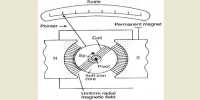Ordinary conductors of electricity become better conductors at lower temperatures. The ability of certain metals, their compounds and alloys to conduct electricity with zero resistance at very low temperatures is called superconductivity. The materials which exhibit this property are called superconductors.
The phenomenon of superconductivity was first observed by Kammerlingh Onnes in 1911. He found that mercury suddenly showed zero resistance at 4.2 K (Figure). The first theoretical explanation of superconductivity was given by Bardeen, Cooper and Schrieffer in 1957 and it is called the BCS theory.

Fig: Superconductivity of mercury
The temperature at which electrical resistivity of the material suddenly drops to zero and the material changes from normal conductor to a superconductor is called the transition temperature or critical temperature TC. At the transition temperature the following changes are observed :
(i) The electrical resistivity drops to zero.
(ii) The conductivity becomes infinity
(iii) The magnetic flux lines are excluded from the material.












